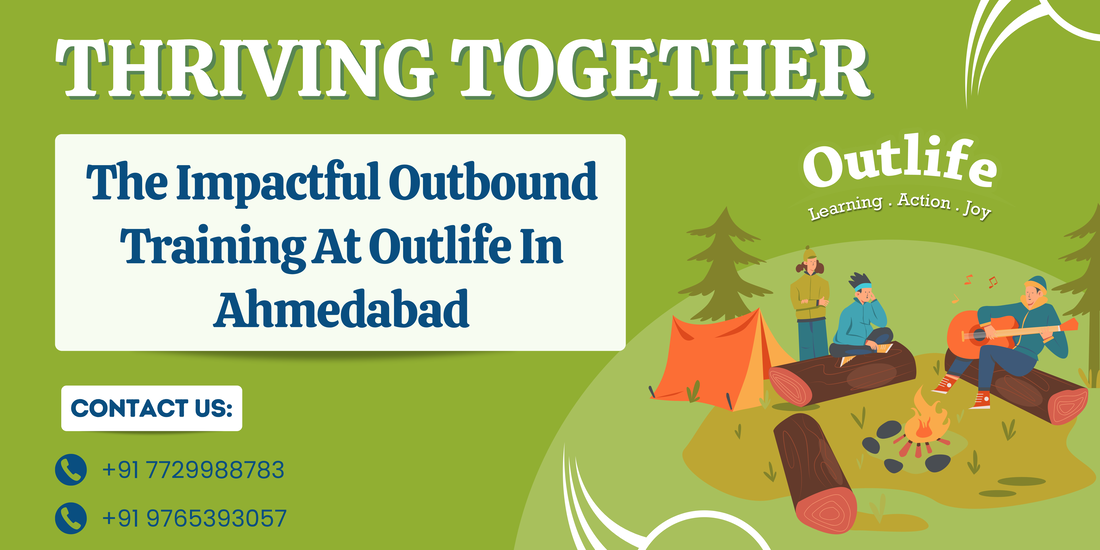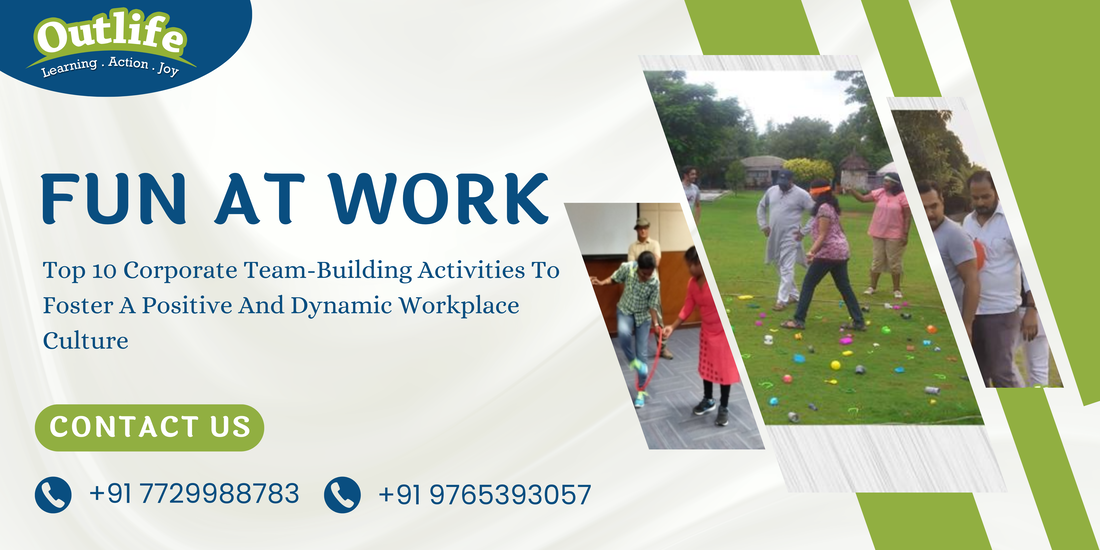|
Dear Outlife Outbound Training Team,
I am writing to express my heartfelt gratitude for the incredible experience I had at your Outbound Leadership Training Program in Ahmedabad. The program, without a doubt, surpassed all my expectations and left an indelible mark on my professional and personal development. From the moment I stepped into the serene and well-equipped training facility, I could sense the commitment and passion of the Outlife team. The training sessions were not just about acquiring leadership skills; they were about pushing boundaries, fostering teamwork, and instilling a sense of self-discovery. The trainers were not only experts in their field but also adept at creating an engaging and supportive environment. The highlights of the program was the diverse range of activities that were seamlessly woven into the curriculum. From high ropes courses to team-building exercises, each activity challenged us to step out of our comfort zones and embrace new perspectives. The hands-on approach allowed me to apply leadership principles in real time, reinforcing the theoretical concepts discussed during the classroom sessions. The personalized feedback sessions were a game-changer. The trainers took the time to understand each participant's strengths and areas for improvement, providing constructive and actionable feedback. This individualized approach not only boosted my confidence but also empowered me to make tangible improvements in my leadership style. Moreover, the scenic backdrop of Ahmedabad added a unique charm to the entire experience. The well-planned outdoor activities provided a refreshing break from the traditional classroom setting and contributed to a holistic learning atmosphere. In addition to the skills gained, the networking opportunities with fellow participants were invaluable. The diverse group brought together professionals from various industries, fostering an environment of collaborative learning and idea exchange. I am confident that the skills and insights gained from the Outbound Leadership Training Program will have a lasting impact on my career trajectory. The investment in this program is not just an investment in professional development but a commitment to personal growth and leadership excellence. I wholeheartedly recommend the Outbound Leadership Training Programs at Outlife Outbound Training to anyone looking to enhance their leadership skills in a dynamic and supportive environment. Thank you for an unforgettable experience that has truly transformed my approach to leadership. Best regards, Sachin Srivastava / Chief Marketing Officer From Teach for India
0 Comments
Dear Team,
I recently had the pleasure of participating in the Team Building program at Outlife Outbound Training in Bangalore, and I can confidently say that it was a game-changer for both myself and my team. The program offered an immersive and enriching experience that went beyond the traditional bounds of team building, leaving a lasting impact on our professional dynamics. From the outset, the Outlife Outbound Training team exhibited exceptional organizational skills and a genuine commitment to ensuring a meaningful and enjoyable experience for all participants. The venue was not only strategically chosen for its serene surroundings but also for its state-of-the-art facilities, providing the perfect backdrop for a day of collaborative learning. One of the standout features of the program was the diverse range of activities that were seamlessly integrated into the curriculum. These activities were not only fun but also strategically designed to foster teamwork, communication, and problem-solving skills. The facilitators at Outlife Outbound Training demonstrated a deep understanding of group dynamics, tailoring each activity to address our specific needs and challenges. The hands-on approach employed during the program was instrumental in breaking down barriers within our team. It allowed us to identify and leverage each team member's strengths while collectively addressing areas that required improvement. The insights gained from these activities were immediately applicable to our daily work environment, resulting in a more cohesive and efficient team. Moreover, the program's emphasis on open communication and feedback was particularly commendable. The facilitators created a safe space for dialogue, enabling team members to express their thoughts and concerns freely. This open communication not only strengthened our professional relationships but also fostered a culture of transparency and collaboration within our team. I would highly recommend Outlife Outbound Training to any organization seeking a tailored and impactful team-building experience. Thank you for providing us with the tools and insights to enhance our teamwork and collaboration. I look forward to the possibility of participating in future programs with your exceptional team. Warm regards, Akash Gupta/IT Manager From LemonTree In a rapidly changing world, more than traditional learning methods may be needed to prepare individuals for the challenges they will face. This is where experiential learning comes in. This article dives deep into the key characteristics of experiential learning and how it can unlock untapped potential.
Experiential learning is a hands-on approach that emphasizes learning through direct experience. It enables learners to actively engage with their environment, making connections between theory and practice. This immersive learning style promotes critical thinking, problem-solving skills, and the ability to apply knowledge in real-world situations. If you're looking to maximize your learning potential, experiential learning is a powerful tool to consider. Unlock your potential by embracing this immersive and transformative approach to education. What is experiential learning? Experiential learning is a hands-on approach that emphasizes learning through direct experience. It goes beyond traditional classroom learning by enabling learners to actively engage with their environment, making connections between theory and practice. This immersive learning style promotes critical thinking, problem-solving skills, and the ability to apply knowledge in real-world situations. Experiential learning involves activities such as simulations, experiments, role-playing, and field trips. These activities provide learners with the opportunity to directly interact with the subject matter, leading to a deeper understanding and retention of knowledge. By actively participating in the learning process, individuals can develop practical skills that can be immediately implemented in their personal and professional lives. The importance of experiential learning Experiential learning holds immense importance in today's educational landscape. It offers a unique approach that caters to the diverse needs and learning styles of individuals. By engaging learners in hands-on activities, experiential learning helps bridge the gap between theory and practice, making education more relevant and applicable. One of the key advantages of experiential learning is its ability to build critical thinking and problem-solving skills. By actively engaging with real-world scenarios, learners are challenged to think creatively, analyze situations, and develop innovative solutions. This enhances their cognitive abilities and prepares them to face the complexities of the modern world. Furthermore, experiential learning promotes self-discovery and personal growth. Through reflection and analysis of their experiences, learners gain insights into their strengths, weaknesses, and areas for improvement. This self-awareness not only enhances their learning but also contributes to their overall personal development. Characteristics of Experiential Learning Experiential learning is characterized by several key elements that distinguish it from traditional forms of education. These characteristics play a crucial role in unlocking the potential of learners and maximizing their learning outcomes. 1. Hands-on activities: Experiential learning involves actively engaging with the subject matter through hands-on activities. This could include experiments, simulations, field trips, or real-world projects. By directly interacting with the material, learners can deepen their understanding and develop practical skills. 2. Reflection: Reflection is an integral part of the experiential learning process. Learners are encouraged to reflect on their experiences, examine the outcomes, and analyze the lessons learned. This reflection process enhances self-awareness, builds personal growth, and provides valuable insights for future decision-making. 3. Active engagement: Experiential learning encourages learners to actively participate, collaborate, and experiment. By doing so, they gain a deeper understanding of the subject matter and develop practical skills that can be immediately implemented. This active engagement promotes critical thinking, problem-solving, and the application of knowledge in real-world contexts. 4. Real-world relevance: Experiential learning emphasizes applying knowledge in real-world contexts. By engaging with authentic scenarios, learners can see the practical relevance of their learning. This not only enhances their understanding but also prepares them for real-life challenges. 5. Learner-centered: Experiential learning is learner-centered, focusing on the individual needs and interests of each learner. It recognizes that individuals have different learning styles and preferences, and therefore offers a variety of activities to cater to these diverse needs. |
Archives
April 2024
Categories
All
|
Our Programs
OUR TRAINING DELIVERY LOCATIONS:
Ahmedabad, Bangalore, Chennai, Kolkata, Delhi, Goa, Hyderabad, Mumbai, Pune, Vizag - India
Ahmedabad, Bangalore, Chennai, Kolkata, Delhi, Goa, Hyderabad, Mumbai, Pune, Vizag - India



 RSS Feed
RSS Feed
